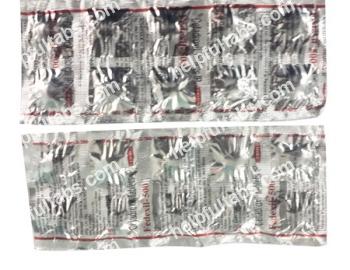
















| Country | Shipping method | Delivery time | Price | |
|
|
 Delivery Delivery |
14-21 days | 10$ | Tracking# available in 4 days |
 Delivery Delivery |
9-14 days | 30$ | Tracking# available in 2 days |
Duricef is a cephalosporin antibiotic that works by disrupting bacterial cell wall formation, leading to a bactericidal effect. It is effective against a wide range of gram-positive bacteria, including Staphylococcus (both penicillinase-producing and non-producing), Streptococcus, and gram-negative microorganisms such as Shigella, Salmonella, Escherichia coli, Haemophilus influenzae, Klebsiella, and some Proteus strains. Duricef is commonly prescribed to treat infections of the respiratory system, urinary tract, pelvic organs, skin, soft tissues, osteomyelitis, and eye infections caused by susceptible microorganisms. It is also used for the prevention of endocarditis and postoperative infectious complications.
Duricef is typically taken once or twice daily, with a standard daily dose of 1-2 mg. Dosage should be adjusted individually, especially for children, based on medical advice.
Avoid alcohol consumption during treatment. Be cautious of potential pseudomembranous colitis and toxicity caused by Clostridium difficile. Mild diarrhea often resolves after discontinuing the medication. Inform your healthcare provider if you are pregnant or planning pregnancy before taking Duricef.
Duricef is contraindicated in cases of hypersensitivity to cephalosporins, penicillins, or penicillamine, as well as during pregnancy and breastfeeding. It should be used cautiously in patients with chronic kidney failure or a history of colitis.
Common side effects may include diarrhea, colitis, nausea, skin redness and swelling, rash, itching, vaginal inflammation, and vomiting. Seizures may occur rarely. Consult your doctor if you experience severe side effects to determine whether continued use is necessary.
Duricef may increase the toxicity of polymyxins and aminoglycosides, as well as diuretics affecting the loop of Henle in the kidneys. Combining Duricef with platelet aggregation inhibitors or non-steroidal anti-inflammatory drugs may increase the risk of bleeding.
Do not take a double dose. If you miss a dose, take it as soon as you remember. For once-daily dosing, the next dose should be taken in 10-12 hours. For twice-daily dosing, maintain a 5-6 hour gap between doses.
Seek immediate medical attention if you experience severe seizures, allergic reactions (hives, rash, facial or tongue swelling, vaginal itching), persistent diarrhea, or kidney failure.
Store Duricef at room temperature (59-77°F or 15-25°C) away from light, moisture, children, and pets. Do not use after the expiration date. Prepared suspension should be used within 14 days and stored in a refrigerator.
This information provides general details about Duricef and does not cover all possible directions, interactions, or precautions. It is not intended for self-diagnosis or self-treatment. Always consult your healthcare provider for specific instructions tailored to your condition. We disclaim responsibility for the accuracy of this information and any consequences arising from its use or self-treatment.